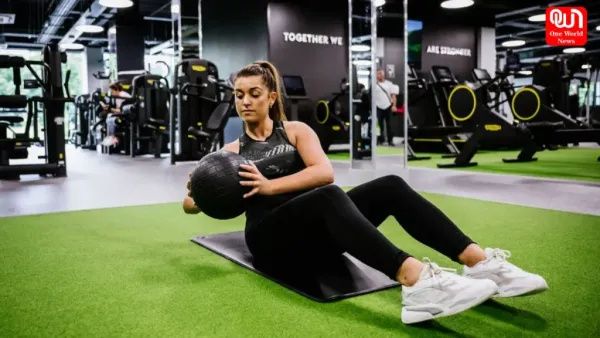
In today’s fast-paced world of ever-changing Gym Trends, fitness enthusiasts are shifting toward something more sustainable and meaningful—Functional Fitness. Instead of focusing on aesthetics or isolated muscle training, functional workouts emphasize movements that improve real-life strength, flexibility, and endurance. As more people realize the long-term benefits, Functional Fitness is emerging as the smarter, more practical alternative to following fleeting Gym Trends.
Functional Fitness focuses on exercises that mimic natural movements—lifting, bending, twisting, and pushing—used in daily life. It enhances core strength, stability, balance, and coordination. Unlike many Gym Trends that prioritize appearance or isolated muscle building, Functional Fitness trains your body to move efficiently and safely in real-world scenarios.
People are increasingly prioritizing wellness over aesthetics. Gym Trends may come and go, but Functional Fitness remains relevant because it enhances overall performance, reduces the risk of injuries, and improves mobility. It’s ideal for people of all ages and fitness levels, making it accessible and adaptable.
Trendy workouts like CrossFit, HIIT, and boutique fitness studios often promise rapid results. Social media amplifies these Gym Trends, creating excitement and competition. While these programs can be effective, they sometimes focus too heavily on intensity rather than functional strength and mobility.
Many Gym Trends emphasize short-term results—focusing on appearance, heavy lifting, or high-intensity routines. Such trends often neglect flexibility, stability, and long-term joint health. Over time, this can lead to injuries, burnout, or a lack of sustainable progress.
Functional Fitness strengthens muscles used in real-life movements. Exercises like squats, lunges, push-ups, and deadlifts train multiple muscle groups together, promoting strength that translates beyond the gym.
Functional workouts improve core strength, coordination, and body awareness. Movements like kettlebell swings or resistance band exercises enhance balance, reducing the risk of falls or injuries.
Unlike some Gym Trends focused solely on muscle gain, Functional Fitness encourages flexibility and mobility. Stretching, bodyweight exercises, and movement-based routines improve joint health and range of motion.
Functional training reduces stress on the body by promoting natural movement patterns. It supports heart health, posture, and overall wellness—benefits that go beyond what traditional Gym Trends offer.
From young adults to seniors, Functional Fitness can be adapted for everyone. It emphasizes safe movements and progressive resistance, making it an inclusive approach to lifelong fitness.
Exercises that engage multiple muscles—such as deadlifts, burpees, and squats—are the foundation of Functional Fitness. They build coordination and overall strength simultaneously.
A strong core supports every movement. Functional workouts incorporate planks, stability ball exercises, and rotational moves to enhance balance and posture.
Stretching routines, yoga-inspired movements, and dynamic mobility drills are integral parts of Functional Fitness. These practices prevent stiffness and promote fluid motion.
Cardio elements like sprints, rowing, and jump ropes are often included to improve heart health and stamina without overexertion.
Gym Trends may provide quick results but often lack sustainability. Functional Fitness focuses on consistency and longevity, making it suitable for everyday life rather than short-term challenges.
While Gym Trends often require specialized equipment or studio memberships, Functional Fitness can be practiced anywhere—with minimal gear. Bodyweight exercises and simple tools like resistance bands or kettlebells are enough to get results.
Read more: Delhi Records Poor To Severe AQI Post-Diwali, Government Prepares Artificial Rain To Improve Air Quality And Combat Pollution
Functional Fitness promotes a deeper connection between the mind and body. Movements require focus, balance, and awareness—improving both mental and physical health. In contrast, many Gym Trends focus solely on output, often neglecting the holistic side of fitness.
Begin with fundamental exercises like squats, lunges, push-ups, and planks. Focus on proper form and technique rather than heavy weights.
Incorporate simple tools like dumbbells, resistance bands, or kettlebells. These allow you to perform compound movements without depending on gym machines.
Balance your routine with mobility work—stretching, yoga, or Pilates—to improve flexibility and recovery.
Instead of measuring success by how much you lift or how you look, track improvements in balance, endurance, and how easily you perform daily activities.
As health awareness grows, people are moving away from Gym Trends that focus solely on appearance. Functional Fitness represents a long-term, health-centered approach that values movement quality and daily functionality.
Modern fitness apps now integrate Functional Fitness routines, allowing users to track mobility, flexibility, and strength progression. The combination of technology and practical movement is shaping the future of personal fitness.
read more: Blue Light Detox: Protect Your Eyes, Reduce Digital Eye Strain, and Boost Eye Health in the Digital Era
Functional Fitness is redefining how we approach health and exercise. While Gym Trends may dominate headlines, real fitness is about how well your body performs in everyday life. Training for strength, mobility, and balance not only improves physical performance but also enhances overall well-being. As fitness evolves, Functional Fitness stands as a timeless, effective, and sustainable approach—proving that true strength lies not in following trends but in mastering movement.